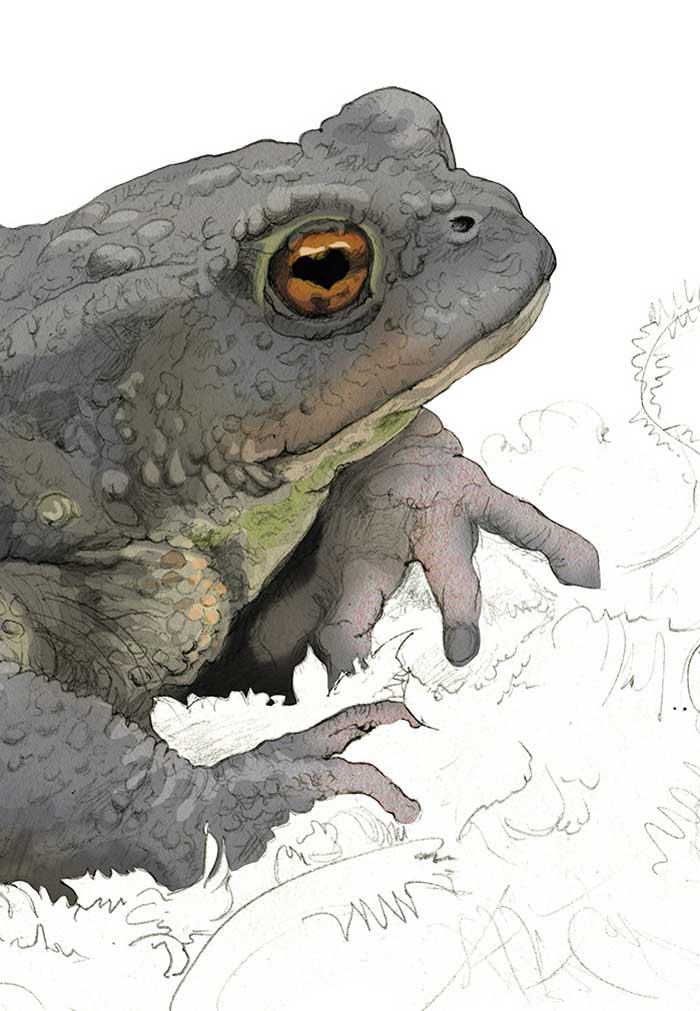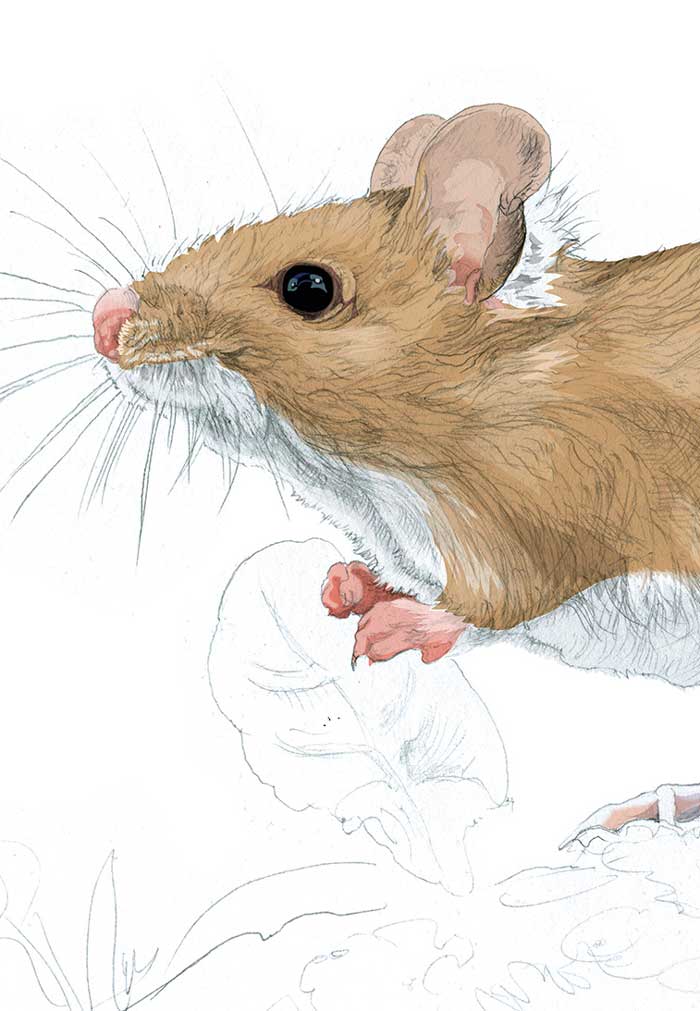Explore the work of illustrator Nick Ellwood as he discusses how the Rye landscape and wildlife inspired his drawings, now found in the Nature Lab exhibition at Sutton Bank National Park Centre.
The majestic River Rye meanders through ancient woodlands, marshy grasslands and species-rich meadows – from high on the westerly moorlands of the National Park, before heading into the Howardian Hills Area of Outstanding Natural Beauty.
Among the babbling becks and wooded dales, you'll also catch the shimmering bright blue feathers of a kingfisher, the copper eyes of a toad, the streaked brown and black feathers of a tawny owl, as well as many more species that bring vibrancy and life to the Rye landscape.
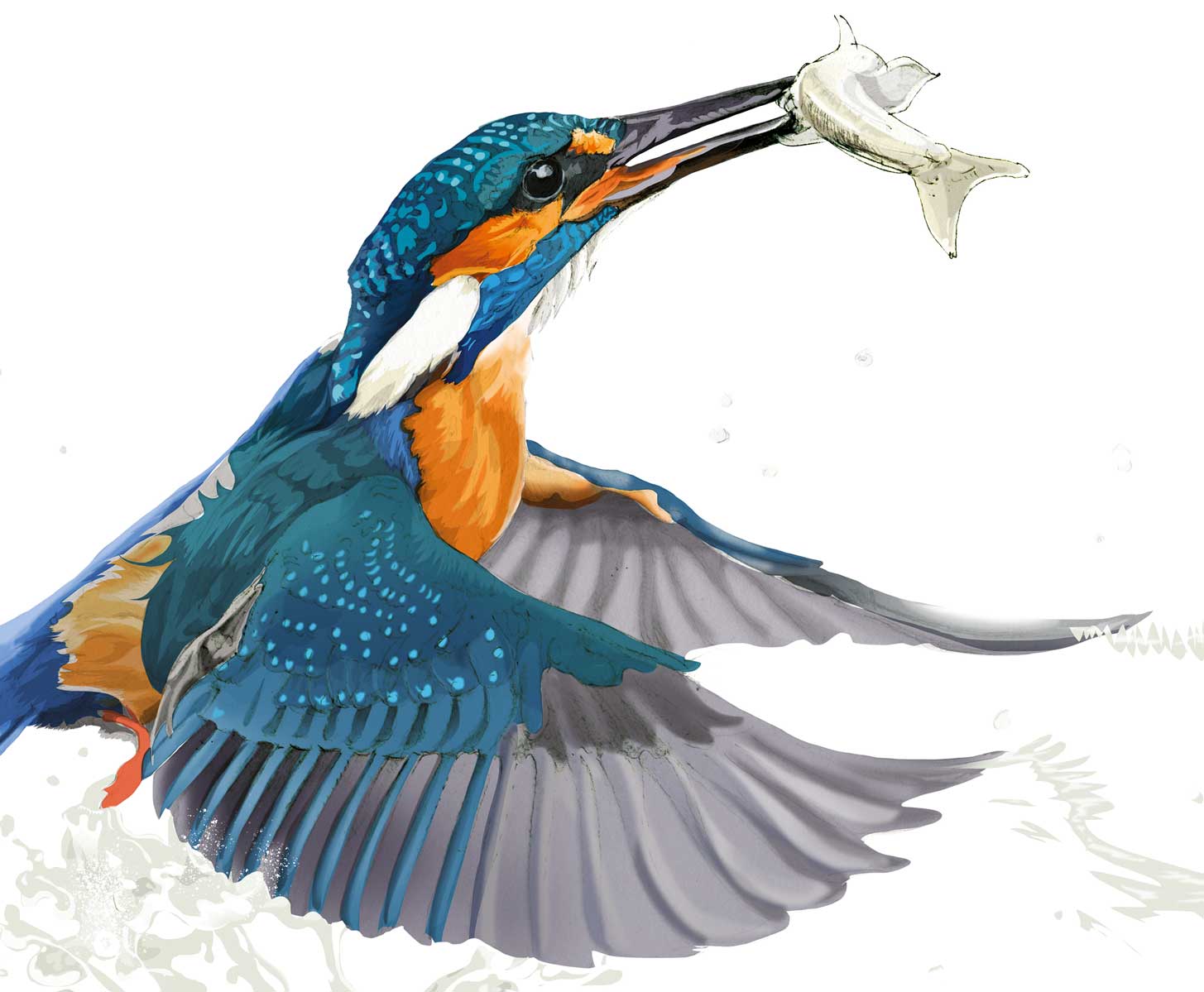
In this interview, illustrator Nick Ellwood shares how he worked alongside our Ryevitalise project, to capture the the vitality, detail and beauty of the area’s wildlife through a series of elegant illustrations. They also bring greater awareness to the many species that we are seeking to support through Ryevitalise, a project which is working to conserve and enhance the natural and cultural heritage of this extraordinary area, a project made possible by the National Lottery Heritage Fund.
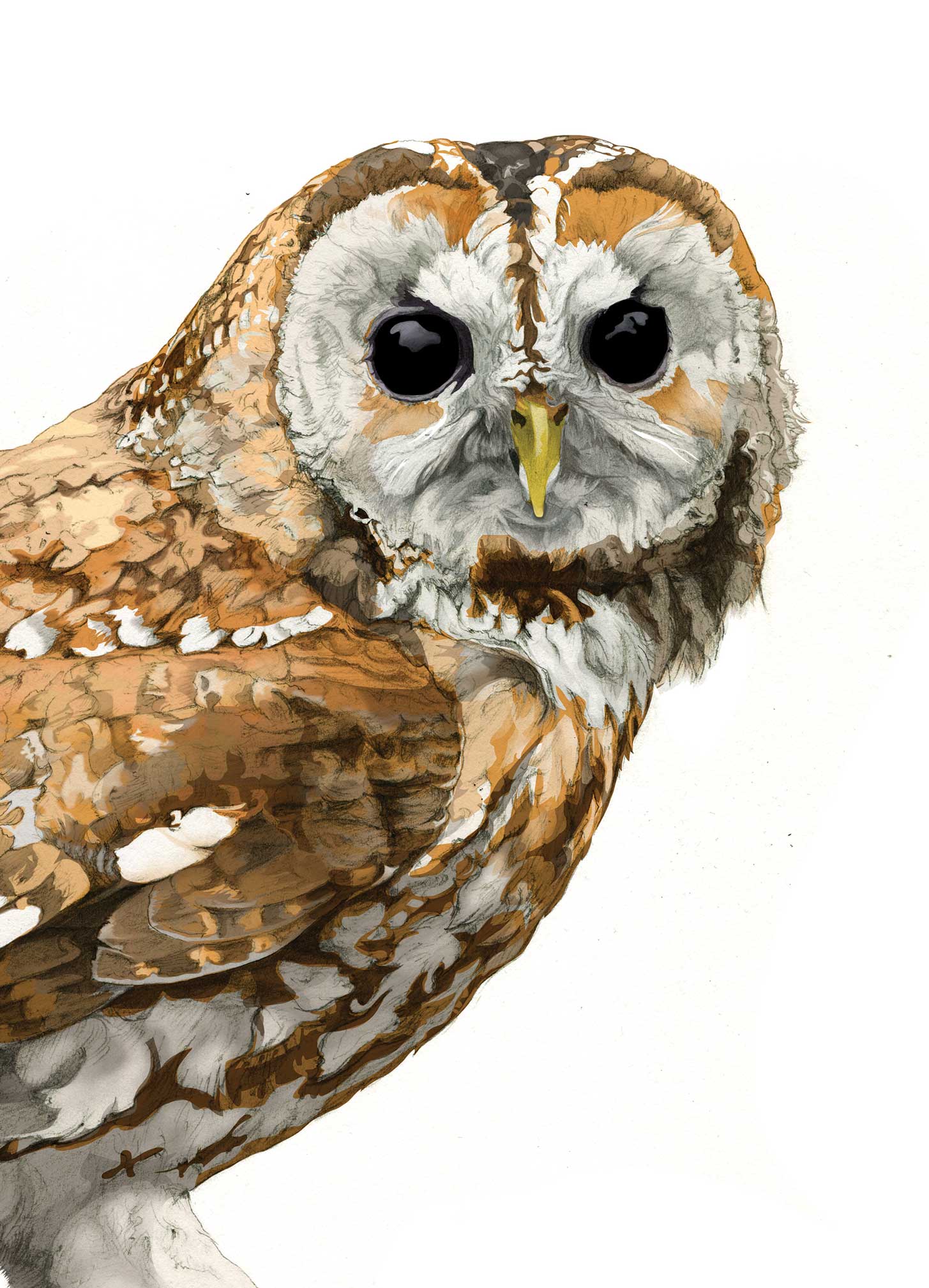
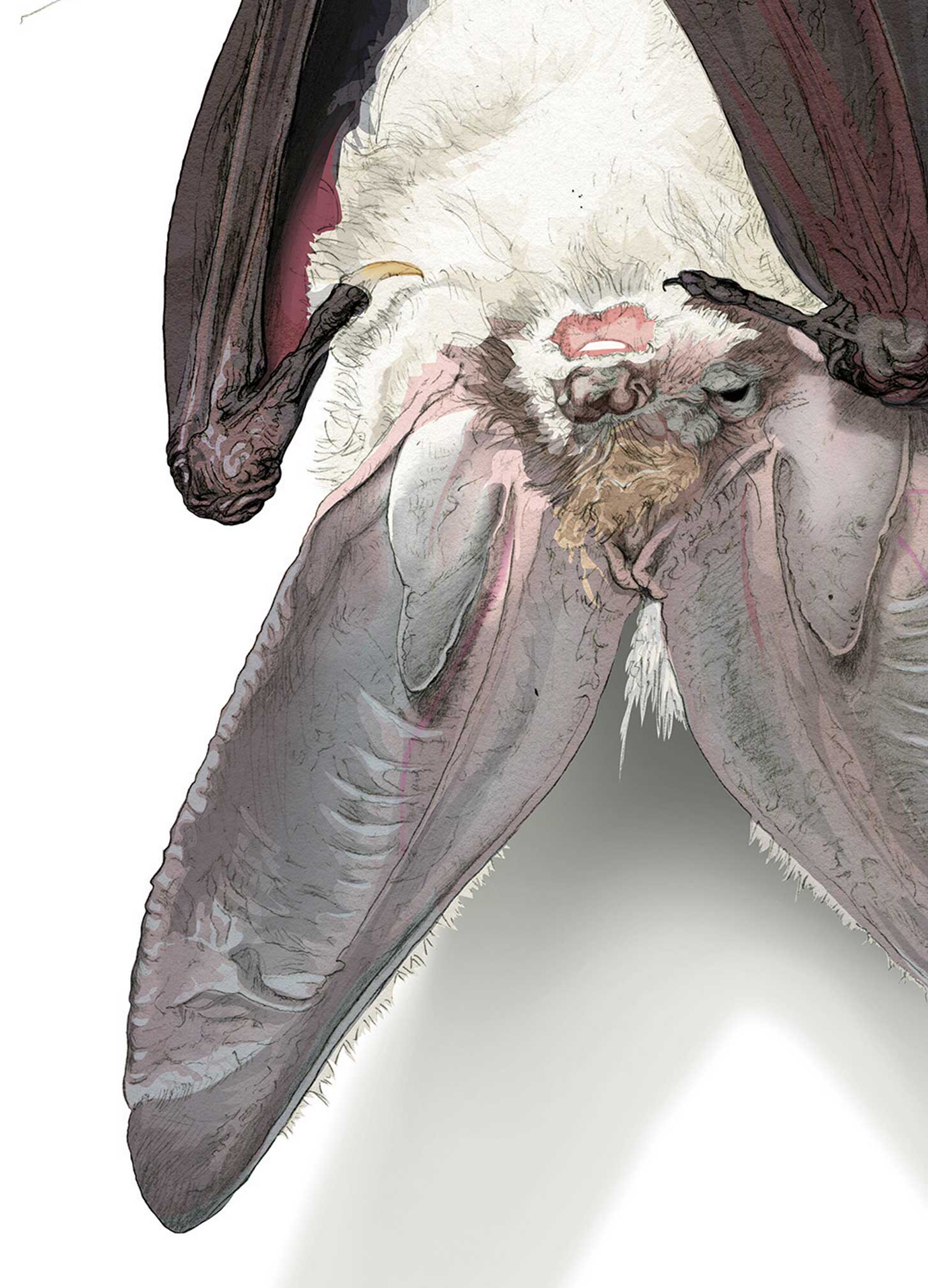
What did you set out to achieve?
"I was first approached by the Ryevitalise project to illustrate the wildlife of the Rye landscape for a new exhibition at Sutton Bank National Park Centre. I wanted to blend an artist sketchbook style with an almost scientific approach of pure observation, in keeping with the history of illustrating botanicals and animals.
"This sort of treatment informs my regular illustration work, which has always been about observation and what you can see by looking and looking again - learning about the world around you through drawing.
"So to be able to go out into the natural world and take that time to really observe and look at what I take for granted - the wildlife, the foxes, the mice - but just to spend hours looking at how their fur is created or how the delicate patterns form across their wings. It was absorbing."
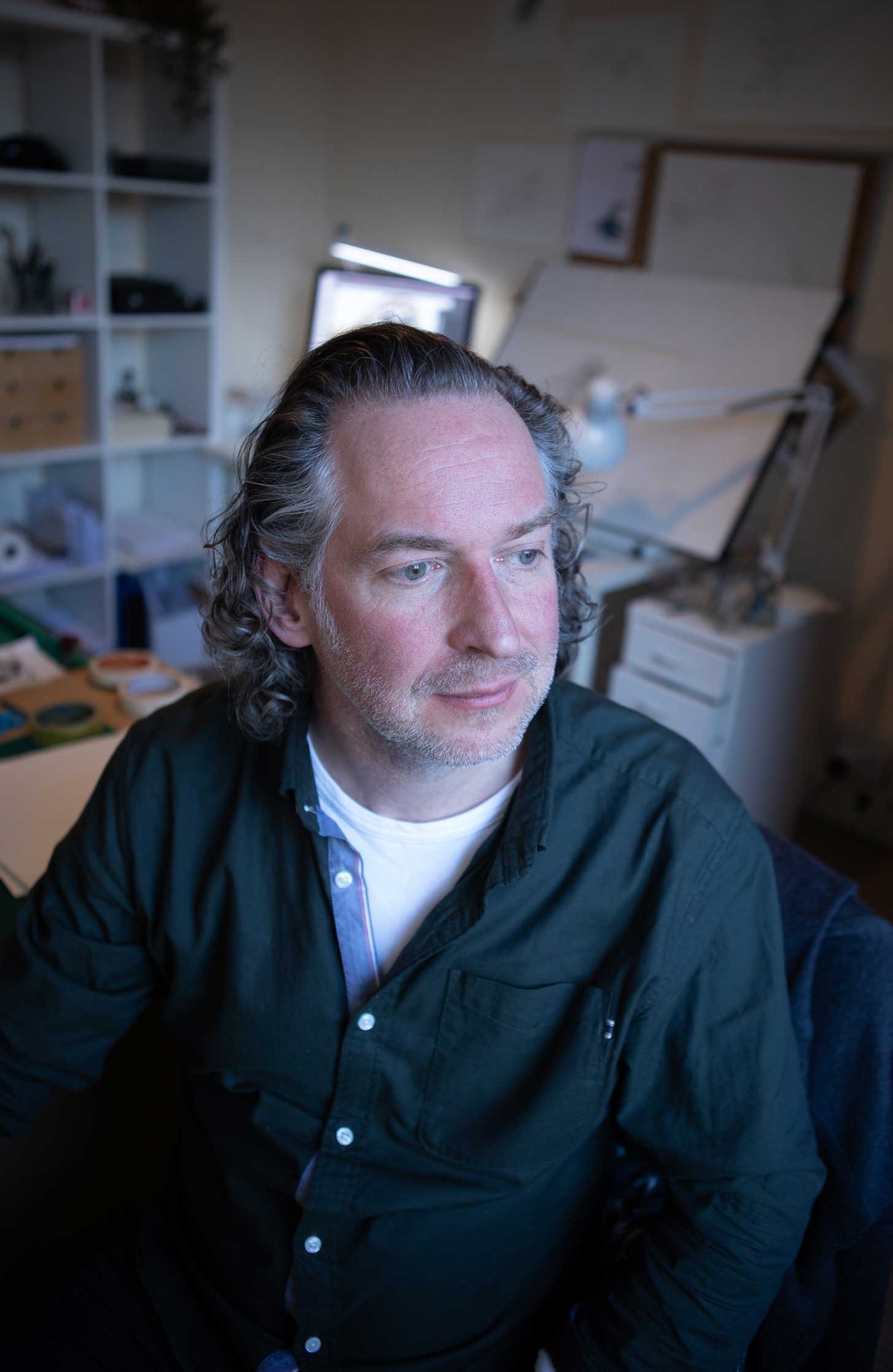
How did this project compare to your more imaginary work illustrating children's books?
"This project enabled me to to really look intensely, study and inquire about the different animals, insects, fish and birds. But it is very similar to how I normally work. Sometimes I've worked a bit like a journalist by going on location and drawing exactly what I see in front of me. It could be people moving past very quickly, but it's all about observing and looking and beginning to understand what you're looking at more and more.
"So even though I had the luxury of spending many more hours than I normally would on one subject, it's the same process. It's looking, looking and learning and becoming more aware of what surrounds us and celebrating it."
'...to spend hours looking at how their fur is created or how the delicate patterns form across their wings. It was absorbing."
And when you say looking and learning, is that looking at images online or is it going out into the field?
"I've always enjoyed walking around in the countryside, just taking in the environment and seeing wildlife in its truest sense. It's the most relaxing place for me. It's where I switch off and I can stop my mind running around and I can just enjoy the world that we take for granted. And then I use research to draw these animals and do them justice.
"There was no way I was going to be able to catch the detail just sitting in the field and looking for a mouse to stay still for three hours. So today, I think we're lucky that we can work alongside such high quality photography that can show so much detail. And I'm much happier doing that than drawing from taxidermy."
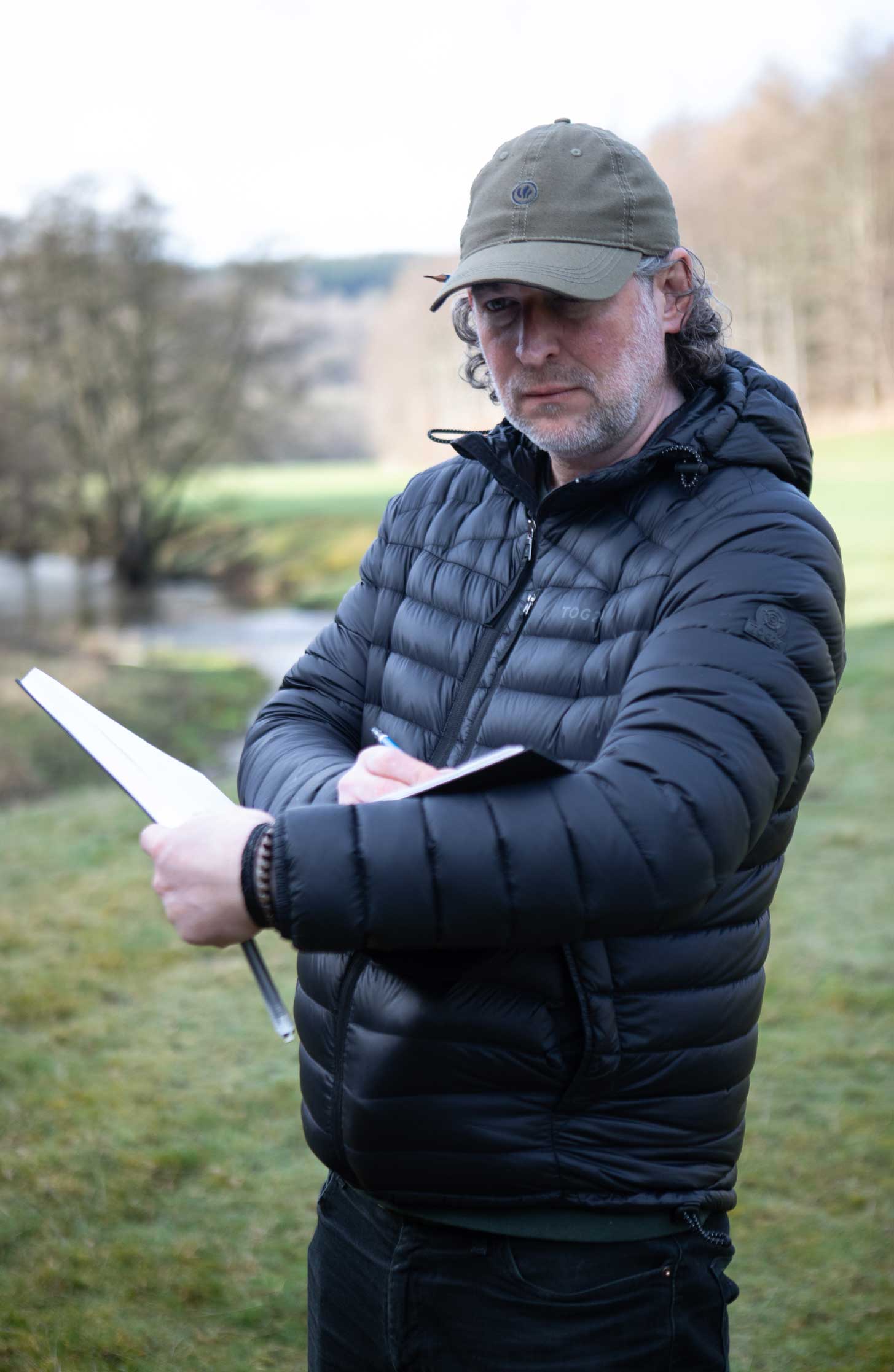
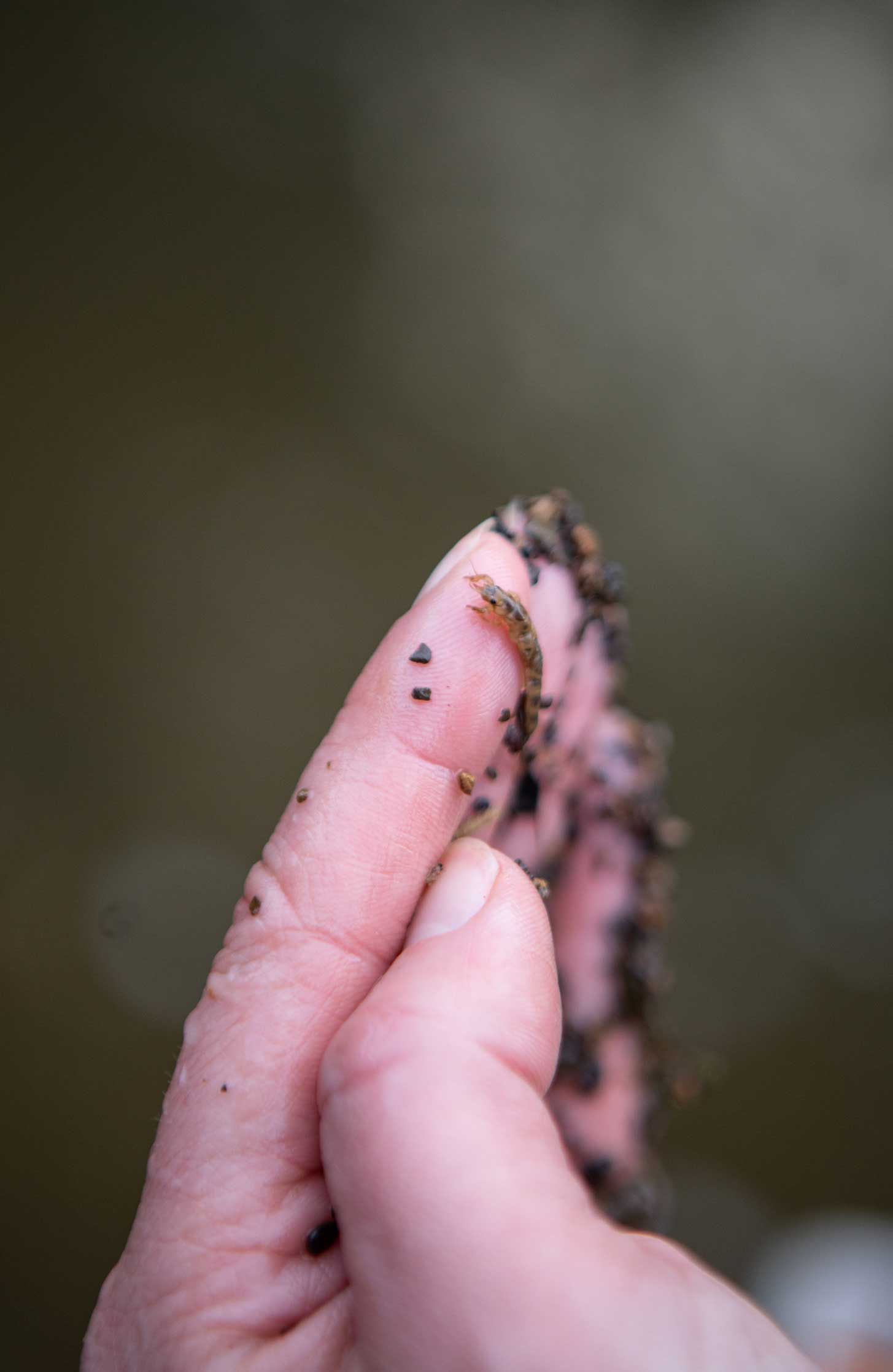
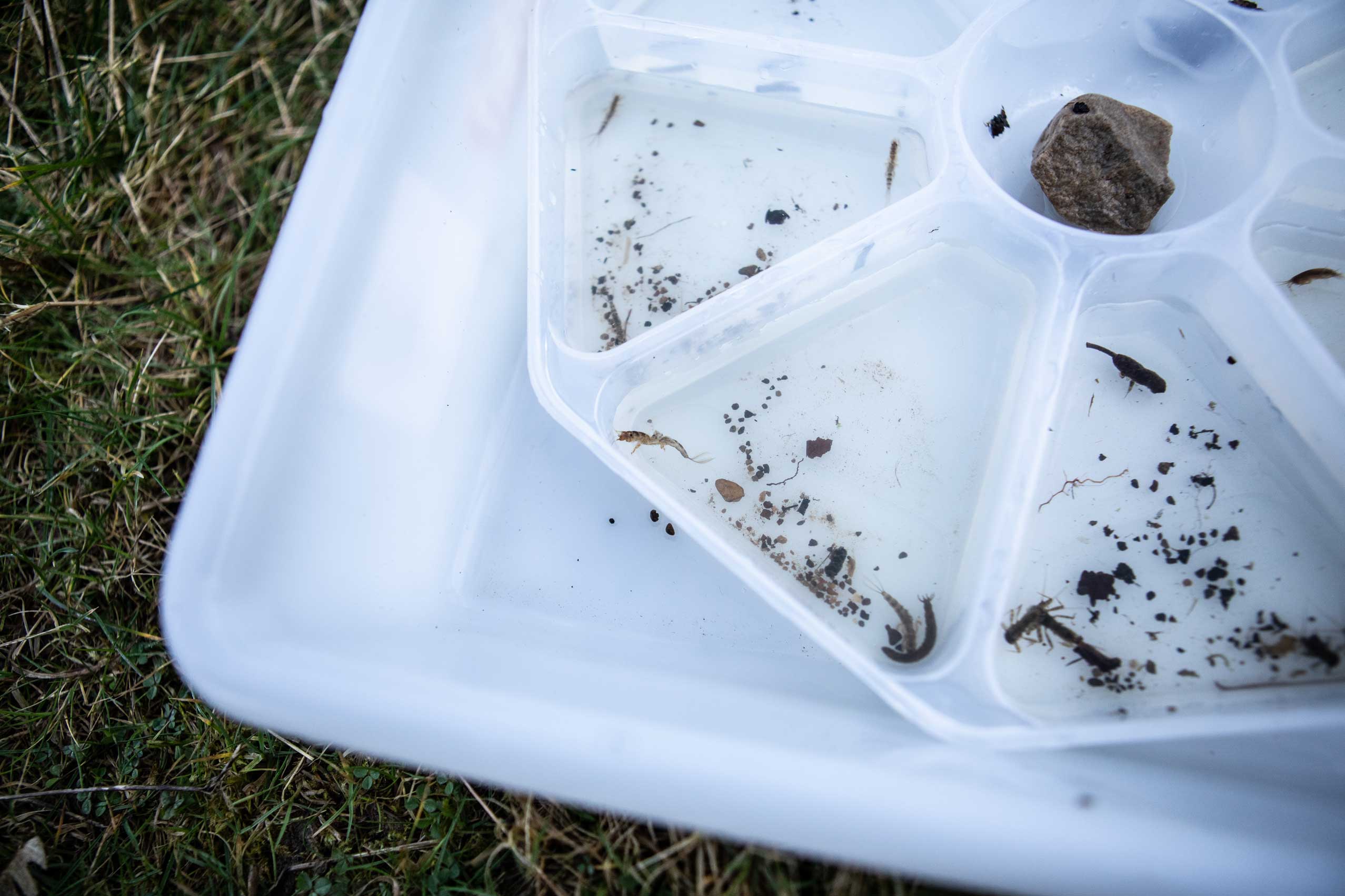
Could you talk a bit about what art means to you and what you are trying to communicate through these drawings?
“Art is about celebrating and learning. I think as children, we all draw. In fact, it's the universal language. It's been with us since the beginning of civilization - from cave drawings. It's a way of understanding, communicating and expressing things that we sometimes find difficult with words.
“But also, it is an inquiry. It's a process of really looking and learning and this remains at the core of contemporary art. You can look at things in many, many different ways. But for me personally, I'm still fascinated by what I I'm looking at. And I know the more I look, the more I see and the more I appreciate.”
"...the bats amazed me. I've never really, really taken time to look at a real bat and they are beautifully ugly. Their faces are just wonderful. They're like little goggles. But also the fur is so soft and then the structure of the wings and the veins within the wings."
Through these drawings, what have you discovered about the Ryevitalise project?
"I mean being able to study each subject so much, I have learned about so many animals, insects, birds. And I've been introduced to species that I've never come across before, names of animals that I would just call a bat when there are so many different species.
"In fact, the bats amazed me. I've never really, really taken time to look at a real bat and they are beautifully ugly. Their faces are just wonderful. They're like little goggles. But also the fur is so soft and then the structure of the wings and the veins within the wings. Wow!
"The mayflies again, I've never taken time to look at them. And you just sort of pass by these small insects and don't consider it. And learning about how essential it was to the ecology and the life cycle of the river. That was fascinating."
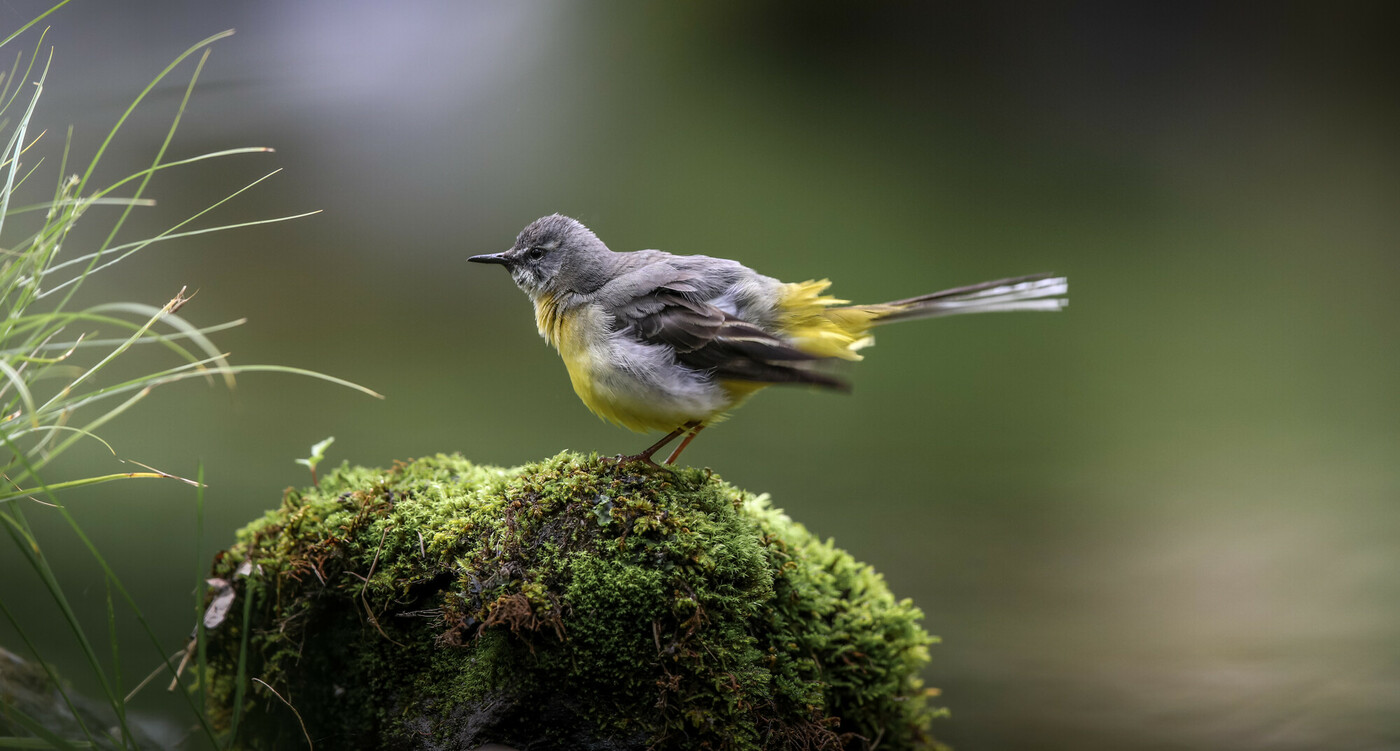
How has your perception of the Rye landscape and the wildlife within it changed since doing these drawings?
“I wasn't really aware of the area fully. So it's introduced me to a part of Yorkshire that I might not have noticed so much. I'm so thankful for that. It's beautiful. One of my first jobs was illustrating Winds in the Willows, so to really look at the shrews, the mice, the badgers, the foxes has been incredible.
"It also reminded me how easily it is to forget about the beauty just outside your door. And that's one of the fantastic things about the Ryevitalise project is that it is working to reconnect people, like myself, to the river and surrounding landscape. It's truly a gift to be able to go and explore it, particularly that it is so close to me here in York.
"If there's anything that I would like people to gain from my drawings, it is a desire to go out and explore the landscape and wildlife themselves. To really appreciate its beauty and to take a brief moment to consider how important this landscape is to communities and wider natural world."
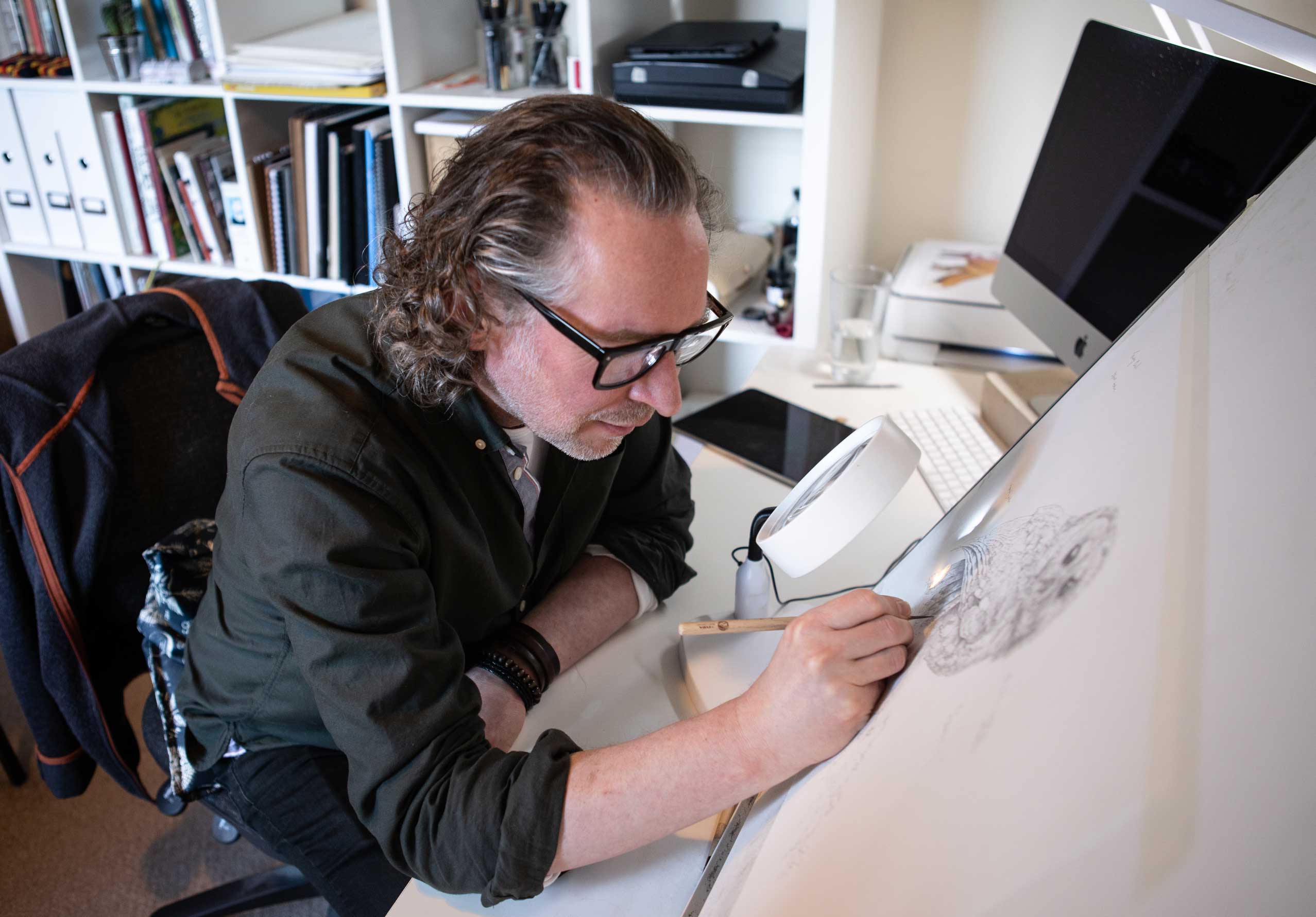
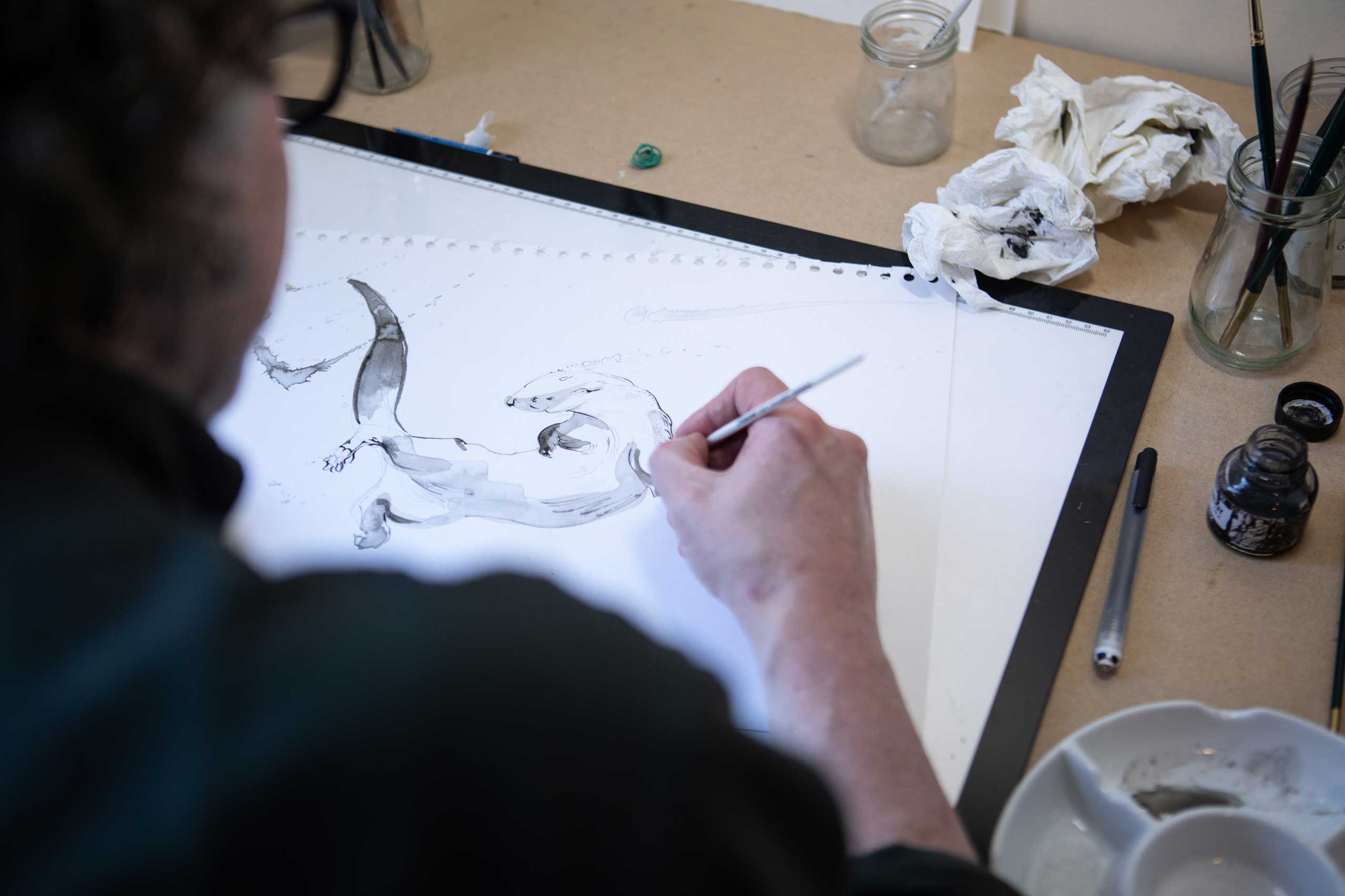
Having learnt more about the aims of the Ryevitalise project, why do you feel such work is vital?
"What I found really fantastic about the Ryevitalise project is that it's looking to re-naturalise the root of the river. So, where manmade interactions over time have impacted the flow of the river, whether that's for farming or industry, actually trying to re-introduce what it once was, enhances and supports the local environment, communities and ultimately the health of the river.
"Also, I was struck by the scale of the project and its ability to work in partnership with other organisations, such as the Environment Agency, and local communities to bring about lasting positive change. Through efforts to connect and restore habitats, as well as reconnect people to the river I feel it will establish a legacy that will last for many years to come."
"If there's anything that I would like people to gain from my drawings, it is a desire to go out and explore the landscape and wildlife themselves. To really appreciate its beauty and importance to communities and wider natural world."
